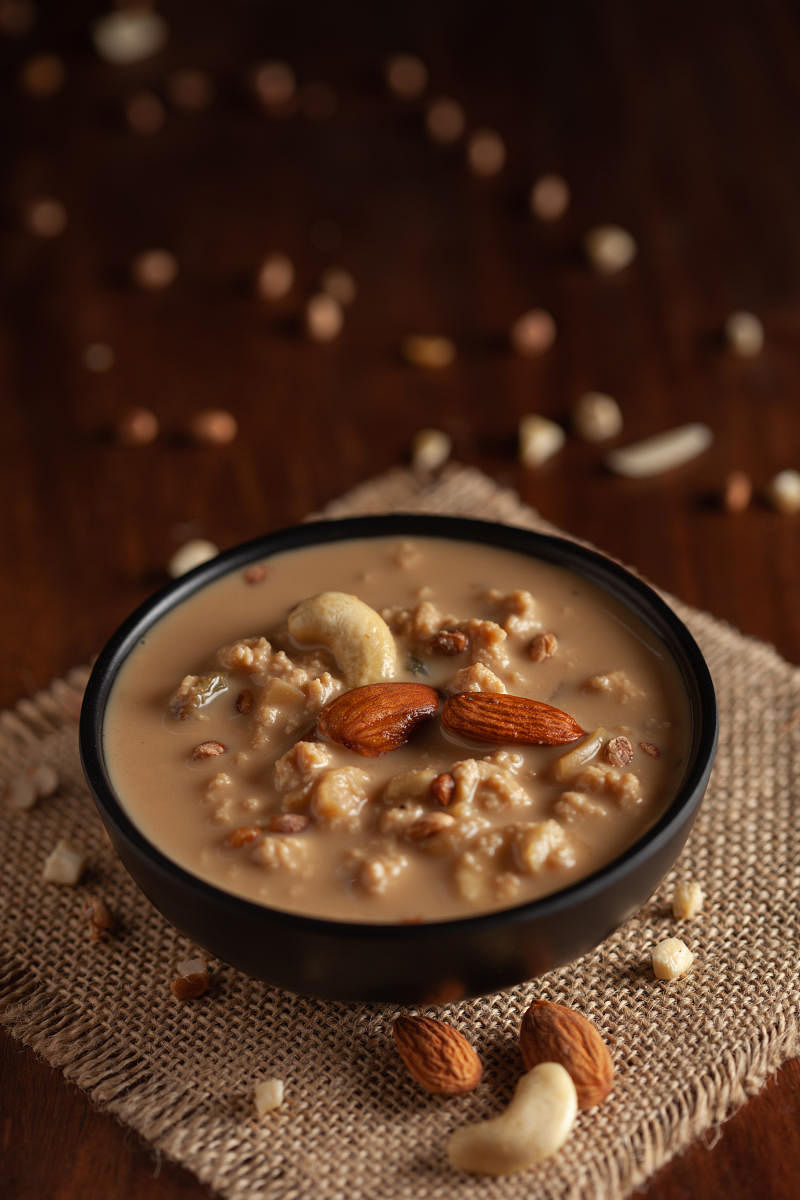

Since the cold season is so brief in Kolkata, residents like to celebrate this period with picnics and feasts, and no celebration here is complete without traditional sweets. For most non-Bengalis like me, we’re familiar with the community favourites — rossogolla and sondesh. So, only after I got married into a Bengali family did I get acquainted with traditional homemade desserts diligently prepared around Poush Parbon or the winter festival in January. That’s when I also came across a secret ingredient that makes the mishtis of Bengal taste even more delicious and desirable in winter.
Date palm jaggery, a seasonal jaggery is harvested in winter from date palm trees that grow wild near ponds and on the roadside in many suburban towns and villages across the state and recently when I visited Shantiniketan, I witnessed first-hand the intriguing process of locals collecting and preparing this natural sweetener. On cold winter mornings, the tappers fasten a rope around their waist and climb to the top of the date palm tree where an earthen pot dangles, collecting the sweet sap that has been trickling all night from the incisions they make in the trunk of the tree. As I stood by a large wood stove where fresh date palm sap collected from nearby trees bubbled, watching a white froth coat the rich amber coloured liquid, the sweet, nutty aroma transported me back to the early days of my marriage when mum-in-law used this ingredient to flavour delicious desserts namely patishapta, pithe, naru and my favourite, dudh puli pitha.
For dudh puli pitha she kneaded 1 cup Gobindobhogh rice flour and 1 tbsp all-purpose flour into the dough. In a pan, 1½ cups freshly grated coconut was cooked on a low flame until the moisture evaporated. I remember the twinkle in her eyes when she revealed the secret nolen gur and added around 100 gms to the coconut filling. After the date palm jaggery dissolved, ½ cup khoya was added. The filling was cooked until it left the sides of the vessel. Standing beside her, stirring a vessel of milk, waiting for it to reduce to half, I watched her press small portions of dough into circles, add a spoonful of coconut filling and shape the pulis into half-moons. Plopped into the milk, the pulis are cooked until they begin to float. Then, with the flame turned off, jaggery is added and allowed to melt. The dessert is cooked for a few more minutes.
Bengalis relish this natural jaggery in all its available forms. The thick dark syrup or jhola gur is enjoyed with hot chapatis and is a seasonal substitute for sweeteners in homemade desserts. Since the liquid form ferments quickly, it’s cooked further into solid patali gur to give it a longer shelf-life and confectioneries across Bengal widely use it to flavour their delicacies from roshogolla, sondesh to ice cream and kulfi and I even hear of it replacing sugar in Christmas cake. Owing to its seasonality, nolen gur is in great demand and so I jumped at the opportunity and bought a jar of the premium sweetener from the original producers.
Armed with my very own freshly harvested nolen gur I returned home to make payesh or our popular kheer made from milk that is reduced to about half, to which rice is added and cooked till almost done, before jaggery is added and cooked a couple more minutes, then garnished with dry fruit. While it’s true that nolen gur sweets are now available year-round, it’s the sweet and smoky aroma of melting nolen gur that wafts from the homes of neighbours in winter, well before the sweet treat arrives at the doorstep, that satiate the craving of our taste buds and pulls at the heartstrings.